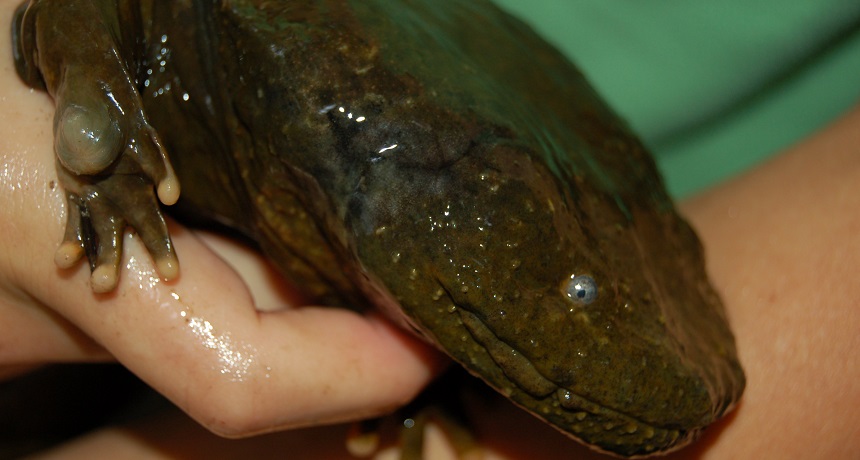Questions for Hellbenders

Close-up of a hellbender that is not pleased to have been pulled from his watery home.
Gregory Lipps
Share this:
- Share via email (Opens in new window) Email
- Click to share on Facebook (Opens in new window) Facebook
- Click to share on X (Opens in new window) X
- Click to share on Pinterest (Opens in new window) Pinterest
- Click to share on Reddit (Opens in new window) Reddit
- Share to Google Classroom (Opens in new window) Google Classroom
- Click to print (Opens in new window) Print
SCIENCE
Before reading:
1. How is an amphibian different from a fish or a reptile? Name three kinds of amphibians.
2. Why is clean water necessary for animals and for people?
During reading:
1. What is hellbender “snot,” and how does it help a hellbender?
2. What happens to a hellbender during its metamorphosis?
3. How many subspecies of hellbender exist? Give their names and where they can be found.
4. A pair of hellbenders can produce hundreds of larvae. Why doesn’t that result in hundreds of adult hellbenders?
5. Why is silt and sediment washing into waterways where hellbenders live?
6. Name three threats that hellbenders face.
7. What are hellbender head-start programs, and how do they work?
8. Why are researchers careful to not release too many sibling hellbenders into the same area?
9. Why does Gregory Lipps tell homeowners to plant trees?
10. Why is the decline of hellbenders troubling to scientists?
After reading:
1. One day in the future, scientists may decide to re-introduce hellbenders to streams where the species once lived but can no longer be found. What would they need to do to make sure such an effort was successful?
2. If hellbenders continue to disappear, the species could go extinct. What might that mean for its ecosystem? Do some research on two other animals that have gone extinct in the past century. Describe the role of humans, if any, in their disappearance.
SOCIAL STUDIES
1. Create a map of where the hellbender subspecies can be found.